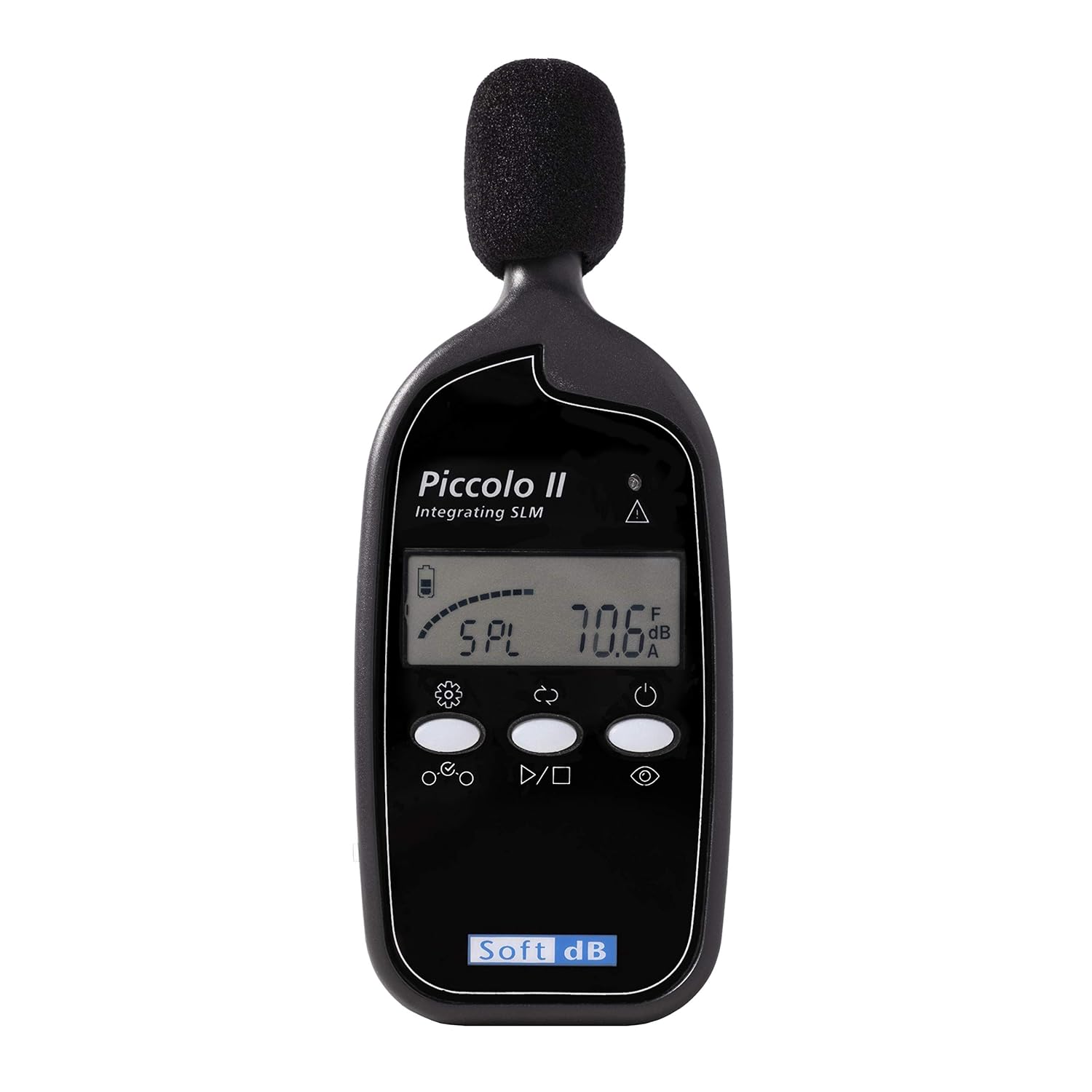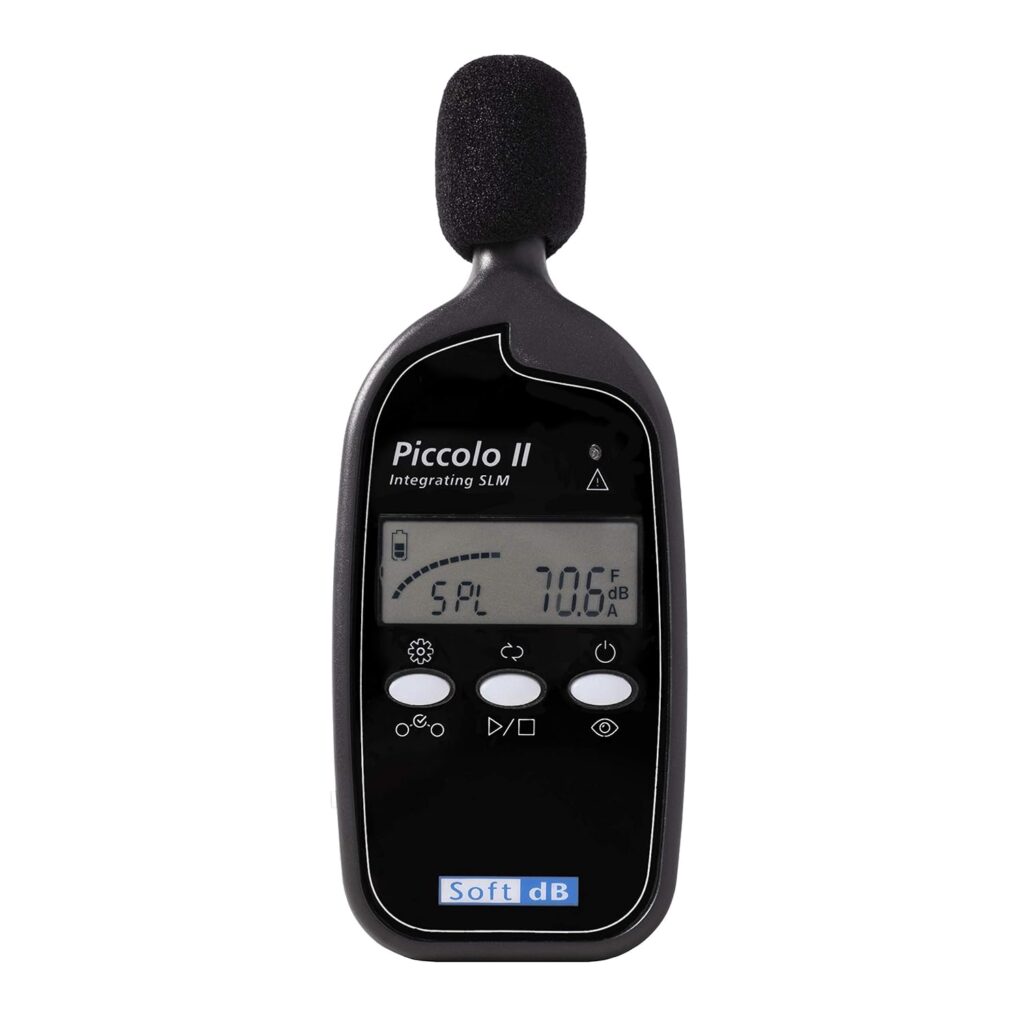Have you ever wondered just how noisy your environment really is or needed an accurate device to measure sound levels for professional purposes? If so, the “Professional Integrating-Averaging Class 2 Sound Level Meter with Data Logger and Noise Analysis Software” might just be the exact piece of equipment you’re looking for. Let’s dive into the specifics and see what makes this tool a noteworthy choice for accurate noise measurement and analysis.
High-Precision Noise Measurements
One of the standout features is its high-precision noise measurements, conforming to the standards set by IEC 61672 and ANSI S1.4 for Class 2 sound level meters. This ensures that you’re getting reliable and accurate data.
Dynamic Range
The meter offers an impressive 30 dBA to 130 dBZpk dynamic range. This means it can detect and log sounds that are barely more than a whisper, up to the roar of a jet engine.
Frequency Span
Its frequency span of 20Hz to 16kHz ensures that it captures a comprehensive range of audible sound frequencies, making it incredibly useful for varied applications—from environmental noise monitoring to industrial sound level assessments.
Simultaneous Recording Capabilities
The feature of simultaneous recording is a huge time saver and increases the record’s accuracy by capturing multiple parameters at once.
Recorded Parameters
It can simultaneously record Leq (Equivalent Continuous Sound Level), Lmax (Maximum Sound Level), Lmin (Minimum Sound Level), Lpeak (Peak Sound Level), and SEL (Sound Exposure Level).
Weighting Options
It supports A, C, and Z weightings. A-weighting approximates the sensitivity of human hearing and is the most commonly used. C-weighting is used for measuring louder sounds, and Z-weighting is essentially flat, providing no frequency weighting.
Statistical Analysis with Ln%
For those interested in more detailed statistical sound analysis, the Ln% feature offers valuable insights.
Selected Weighting
With Ln%, you can choose a specific weighting—A, C, or Z—and it will provide statistical data useful for in-depth acoustic analysis.
Octave Bands and FFT
The meter includes octave band filters from 31.5Hz to 8kHz and a 400 lines FFT (Fast Fourier Transform) for precise frequency analysis. This helps in identifying specific frequencies that may be problematic or of interest.
Data Storage Capacity
You’ll find the data storage capabilities to be extensive. With the ability to store up to 198,948 records, you won’t have to worry about running out of space anytime soon.
Powerful Audio Post-Processing and Spectrum Analysis Software
The included software enhances the data collected by the meter. This powerful tool allows you to perform spectrum analysis and post-process recorded audio files, providing deeper insights and more refined data presentation.
User-Friendly Interface
The software’s user-friendly interface simplifies managing key instrument settings and functions. Whether you’re a beginner or a seasoned professional, navigating through the options is intuitive, making your work that much more efficient.
High-Quality Waveform Audio Recording
Capturing high-quality waveform audio files is another remarkable feature. This ensures that not only numerical data but also the actual sound can be reviewed and analyzed later for more in-depth studies.
Pros and Cons
Here’s a quick breakdown of the key pros and cons to help you make an informed decision:
| Pros | Cons |
|---|---|
| High-precision measurements | Costly for casual users |
| Extensive data storage | May require some setup time |
| Simultaneous recording of multiple parameters | High-end features might be overkill |
| User-friendly software for post-processing and spectrum analysis | Requires a learning curve |
Use Cases
Environmental Noise Monitoring
Whether you are monitoring traffic noise or the sound levels at a construction site, this device ensures precise measurement, helping comply with local regulations.
Industrial Sound Level Assessment
In industrial settings, consistent noise levels can cause hearing damage. Using this meter will help you keep an accurate log and ensure workplace safety.
Acoustics Engineering
Sound engineers can benefit from this tool for tuning spaces, identifying problematic frequencies, and ensuring optimal sound quality.
Music and Entertainment Industry
In studios or during live events, maintaining proper sound levels is crucial. This meter helps keep sounds within desired levels ensuring quality listening experiences.
Conclusion
The “Professional Integrating-Averaging Class 2 Sound Level Meter with Data Logger and Noise Analysis Software” is not just a mouthful to say, but also a robust and versatile tool for anyone serious about precise and dependable noise measurement. Its high precision, comprehensive frequency span, simultaneous recording capabilities, massive data storage, and robust post-processing software make it a top choice for professionals across various fields. While it may have a higher price point and a bit of a learning curve, the features and reliability it offers make it well worth the investment.
Disclosure: As an Amazon Associate, I earn from qualifying purchases.





